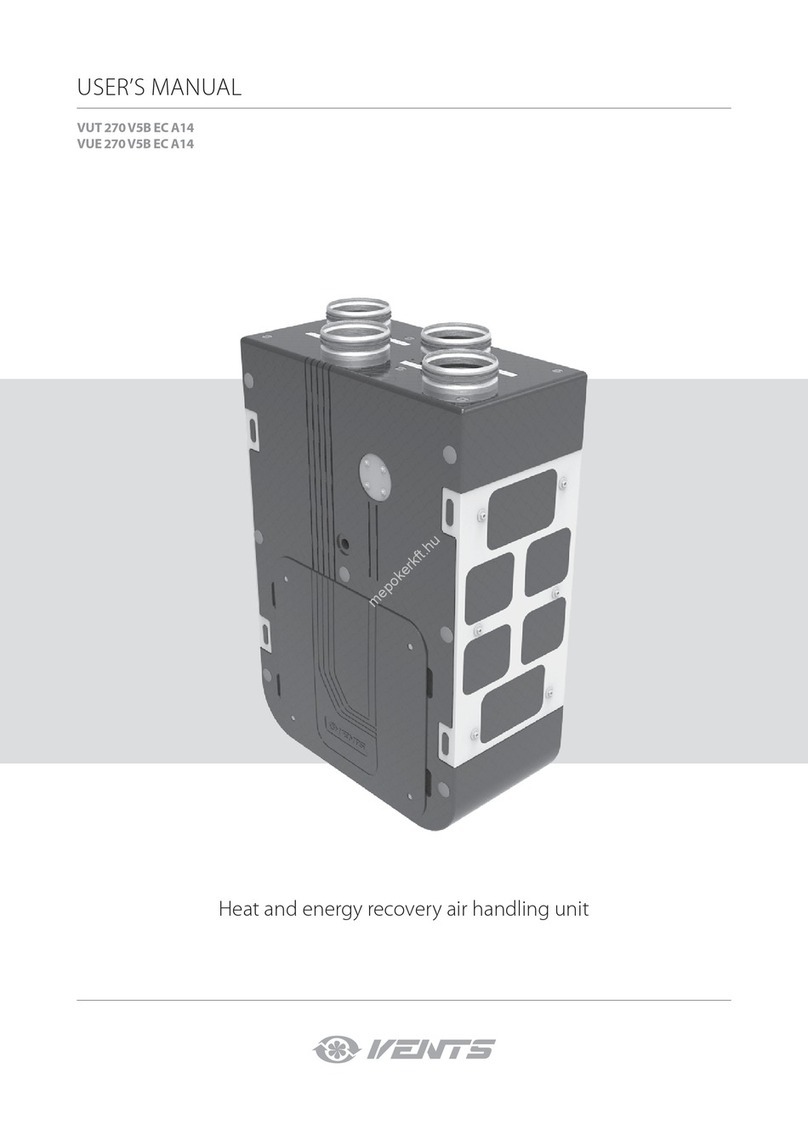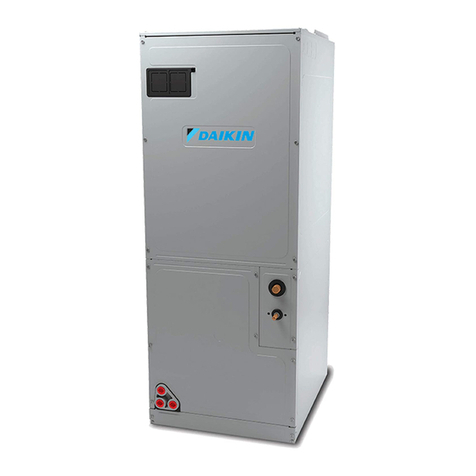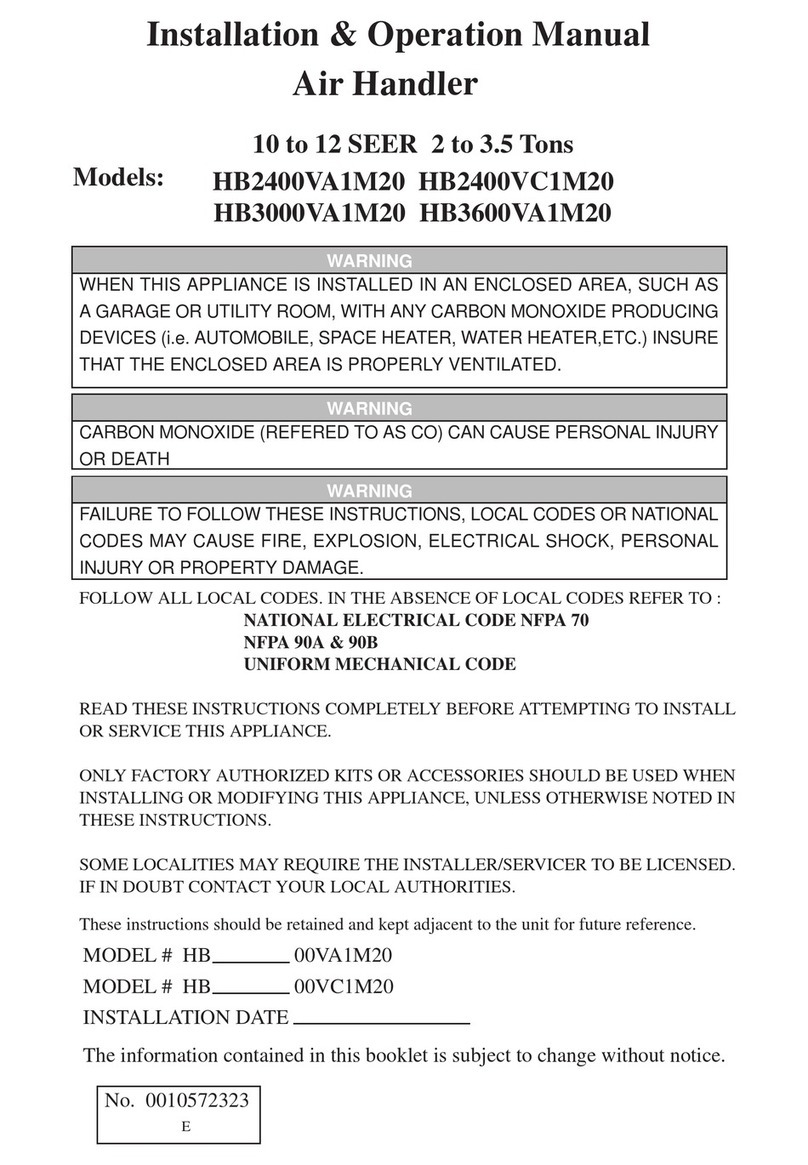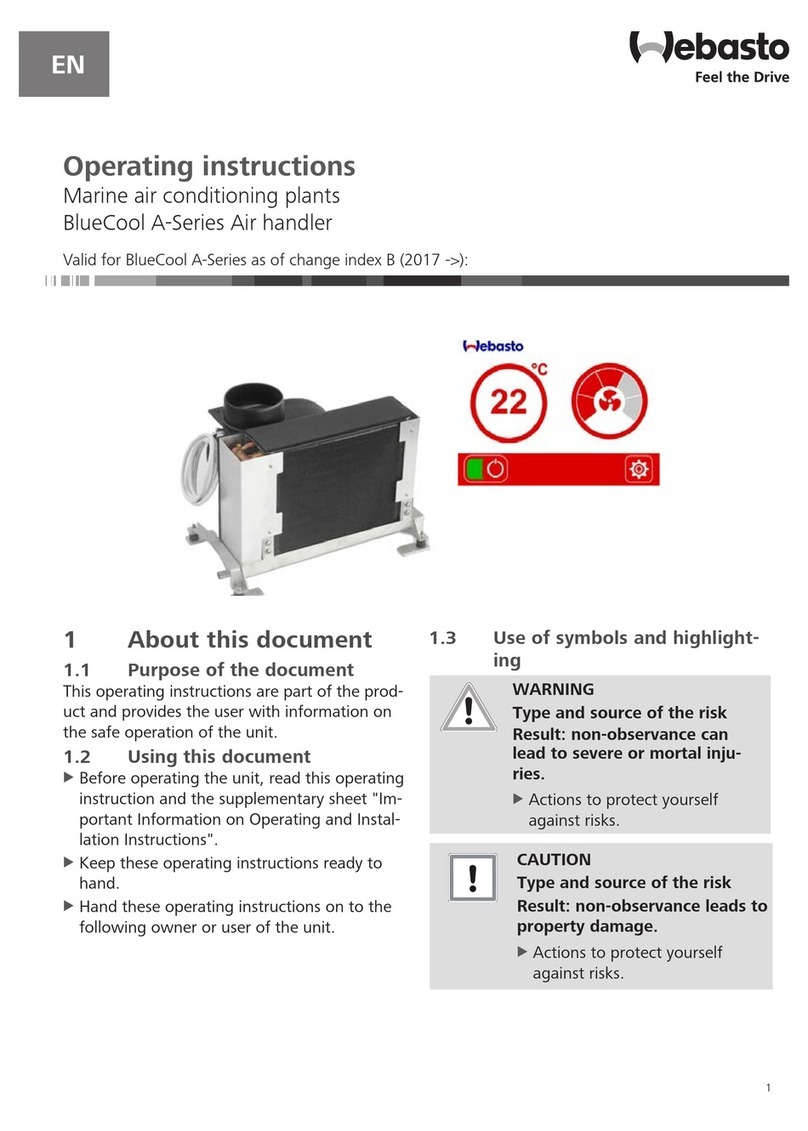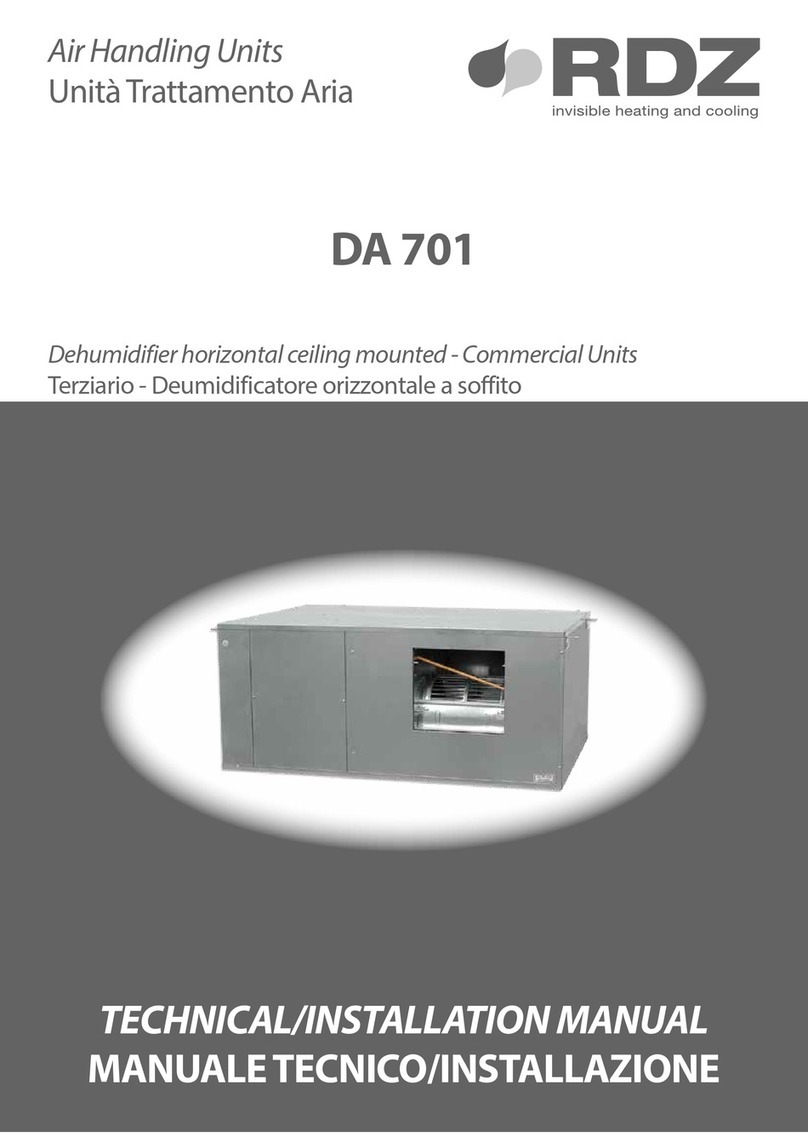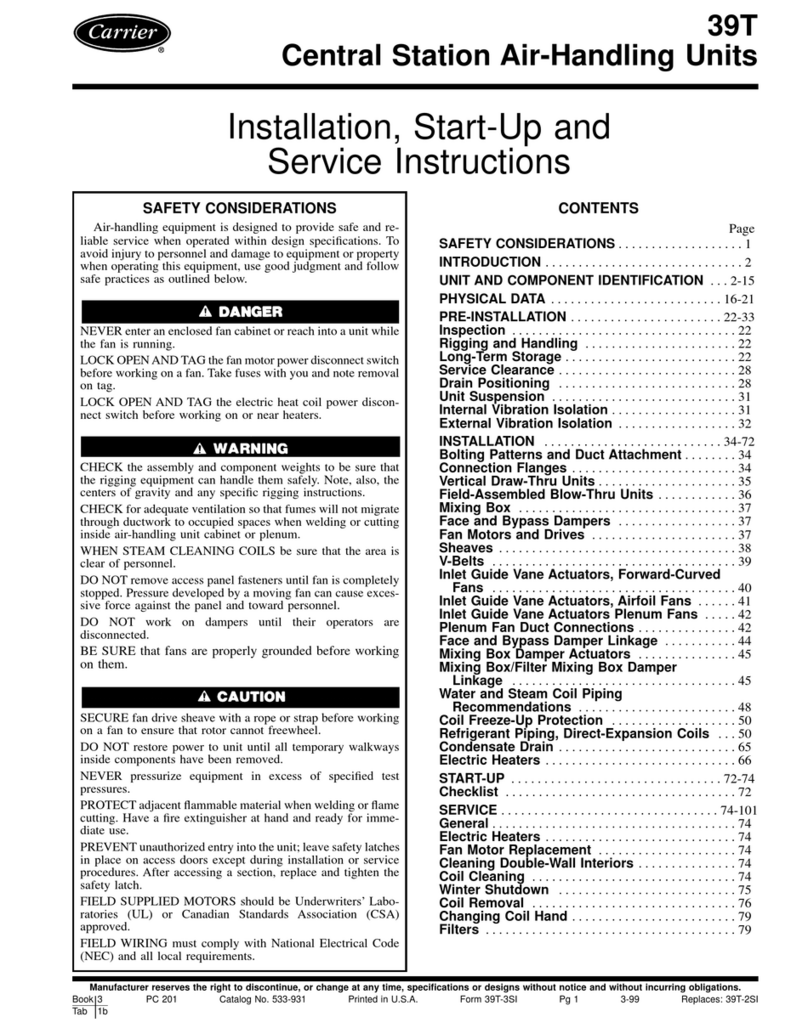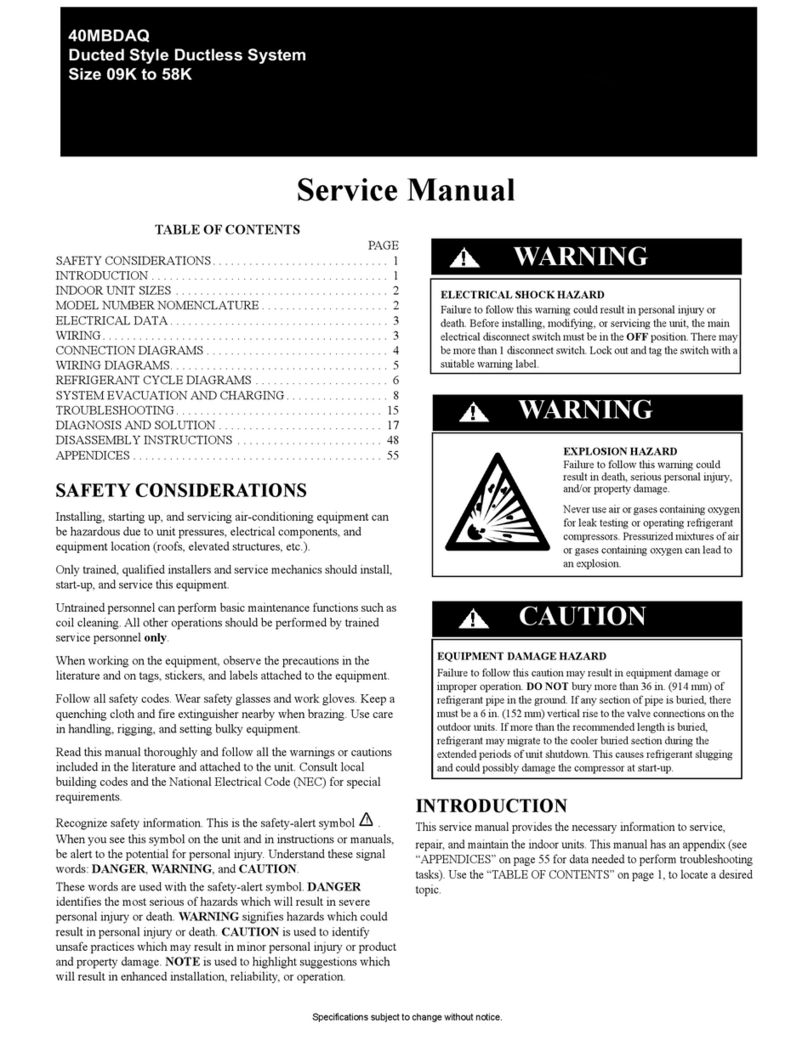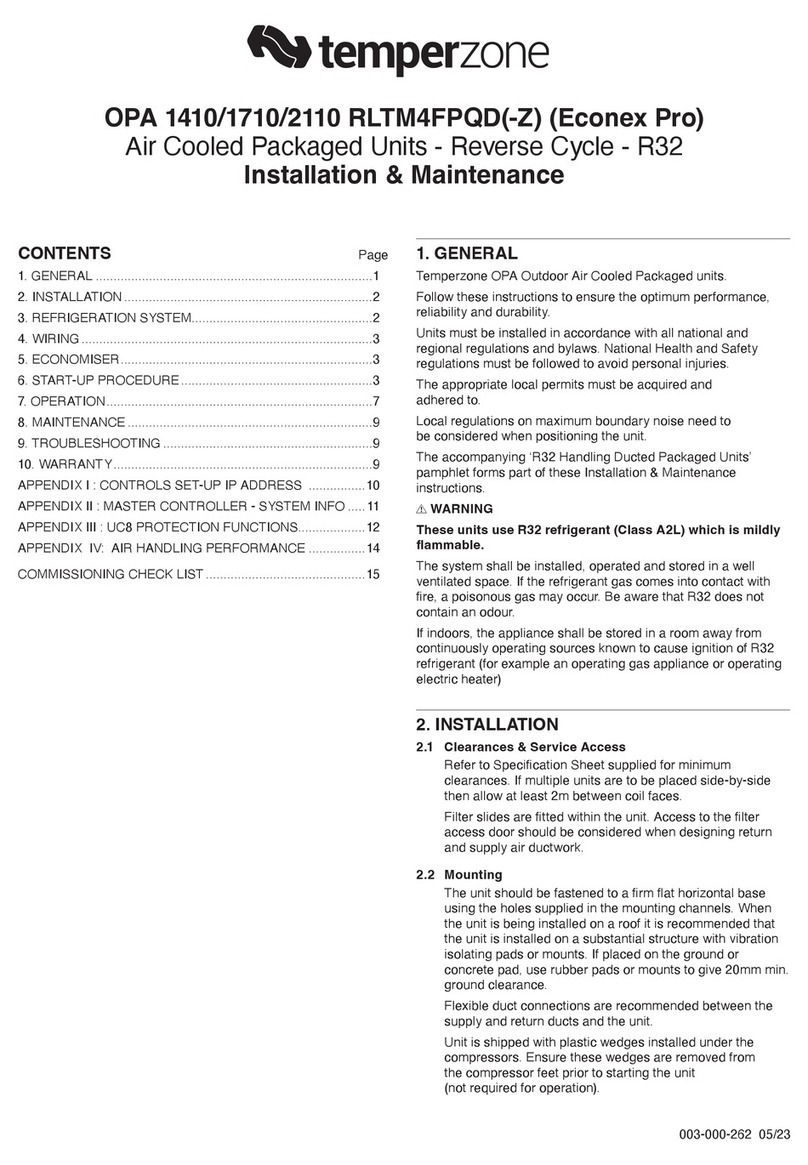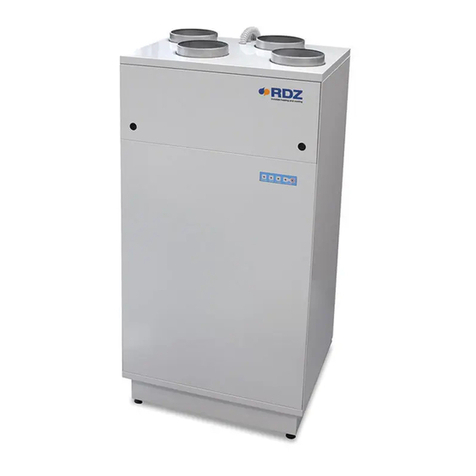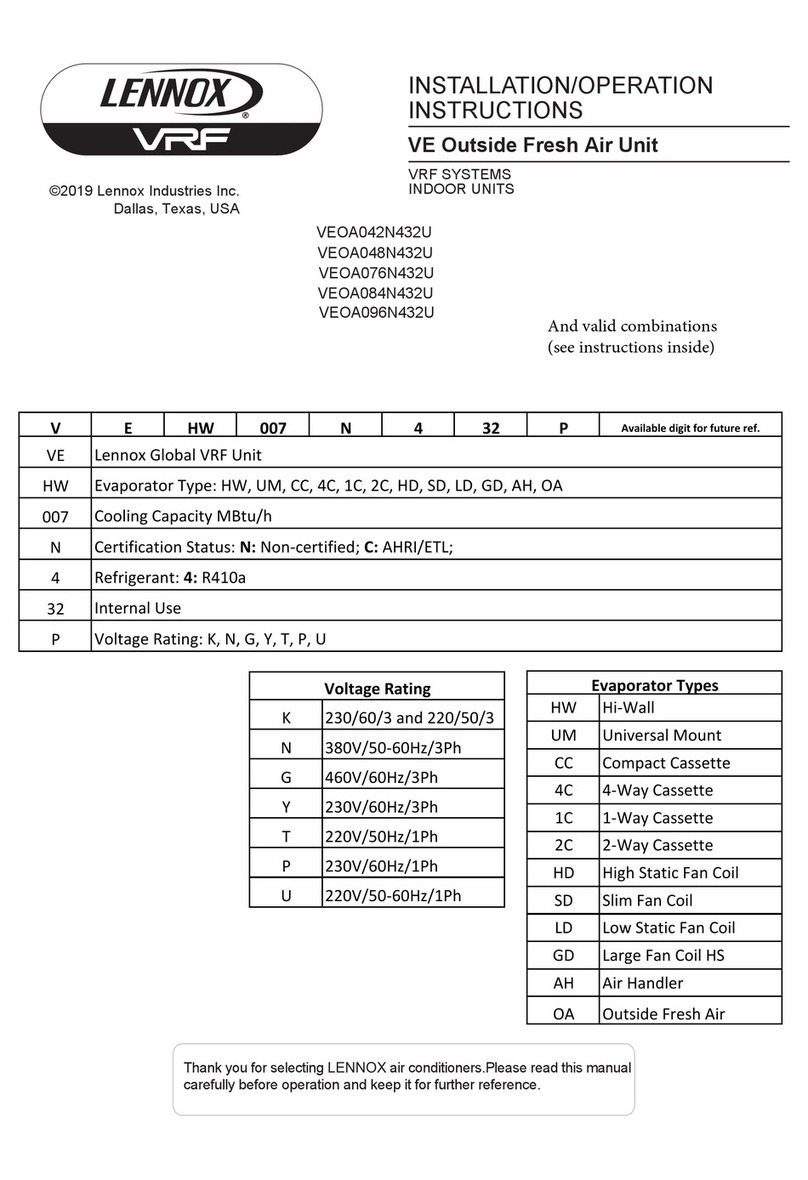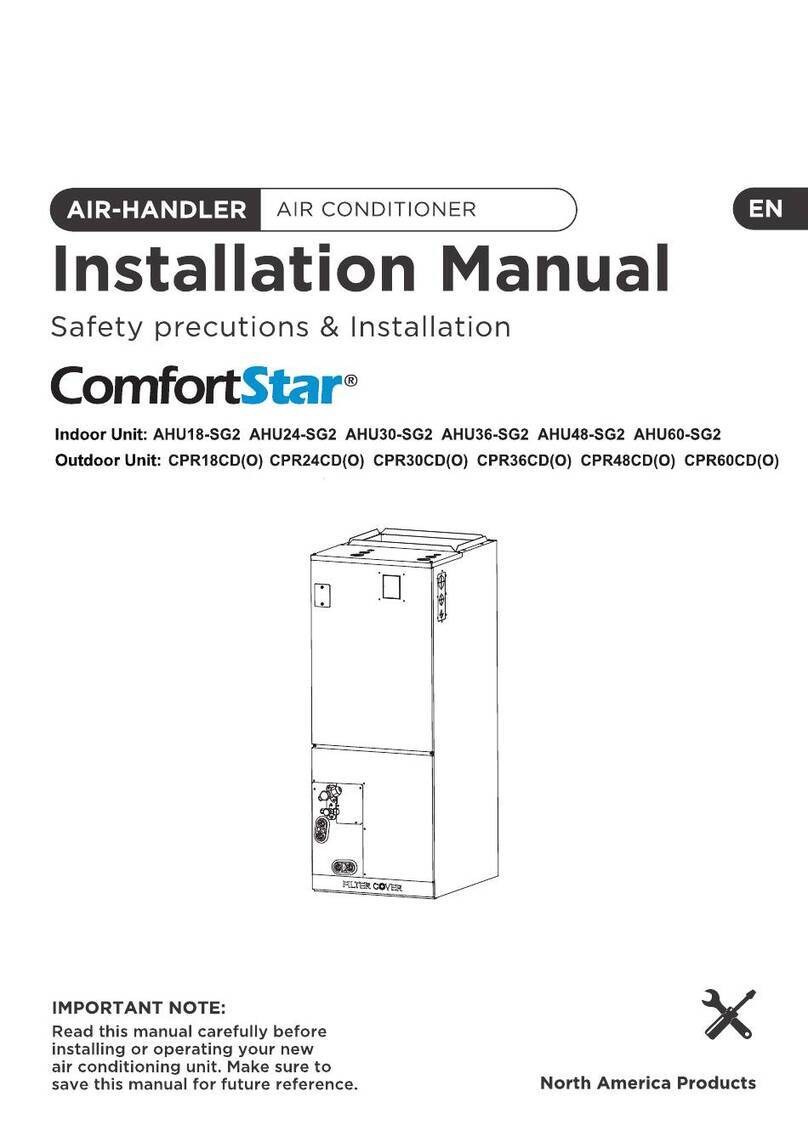
01
This document is customer property and is to remain
with this unit.
These instructions do not cover all the different
variations systems nor does it provide for every possible
contingency to be met in connection with installation.
All phases of this installation must comply with national
state and local codes. If additional information is
required, please contact your local distributor.
1 SAFETY
This is a safety alert symbol. When you see
this symbol on labels or in manuals, be alert
to the potential for personal injury.
This is an attention alert symbol. When you
see this symbol on labels or in manuals, be
alert to the potential for personal injury.
Disconnect all power to unit before installing or
servicing. More than one disconnect switch may
be required to de-energize the equipment.
Hazardous voltage can cause server personal
injury or death.
WARNING
The unit must be permanently grounded. Failure
to do so can result in electrical shock causing
personal injury or death.
WARNING
WARNING
If removal of the blower assembly is required, all
disconnect switches supplying power to the
equipment must be de-energized and locked (if
not in sight of unit ) so the field power wires can
be safely removed from the blower assembly.
Failure to do so can cause electrical shock
resulting in personal injury or death.
WARNING
WARNING
Because of possible damage to equipment or
personal injury, installation, service, and
maintenance should be performed by a trained,
qualified service personnel. Consumer service is
recommended only for filter cleaning/
replacement. Never operate the unit with the
access panels removed.
WARNING
These instructions are intended as an aid to
qualified, licensed service personnel for proper
installation, adjustment and operation of this unit.
Read these instructions thoroughly before
attempting installation or operation. Failure to
follow these instructions may result in improper
installation, adjustment, service or maintenance
possibly resulting in fire, electrical shock,
property damage, personal injury or death.
PROPOSITION 65: This appliance contains
fiberglass insulation. Respirable particles of
fiberglass are known to State of California to
cause cancer.
All manufacturer products meet current federal
OSHA Guidelines for safety. California
Proposition 65 warnings are required for certain
products, which are not covered by the OSHA
standards.
California’s Proposition 65 requires warnings for
products sold in California that contain or
produce any of over 600 listed chemicals known
to the State of California to cause cancer or birth
defects such as fiberglass insulation, lead in
brass, and combustion products from natural
vapor.
All “new equipment” shipped for sale in
California will have labels stating that the
product contains and/or produces Proposition 65
chemicals. Although we have not changed our
processes, having the same label on all our
products facilitates manufacturing and shipping.
We cannot always know “when, or if” products
will be sold in the California market.
You may receive inquiries from customers about
chemicals found in, or produced by, some of our
heating and air-conditioning equipment, or found
in natural vapor used with some of our products.
Listed below are those chemicals and
substances commonly associated with similar
equipment in our industry and other
manufacturers.
Glass Wool (Fiberglass) Insulation
Carbon Monoxide (CO)
Formaldehyde
Benzene
More details are available at the websites for
OSHA (Occupational Safety and Health
Administration), at www.osha.gov and the State
of California’s OEHHA (Office of Environmental
Health Hazard Assessment), at www.oehha.org.
Consumer education is important since the
chemicals and substances on the list are found
in our daily lives. Most consumers are aware that
products present safety and health risks, when
improperly used, handled and maintained.
